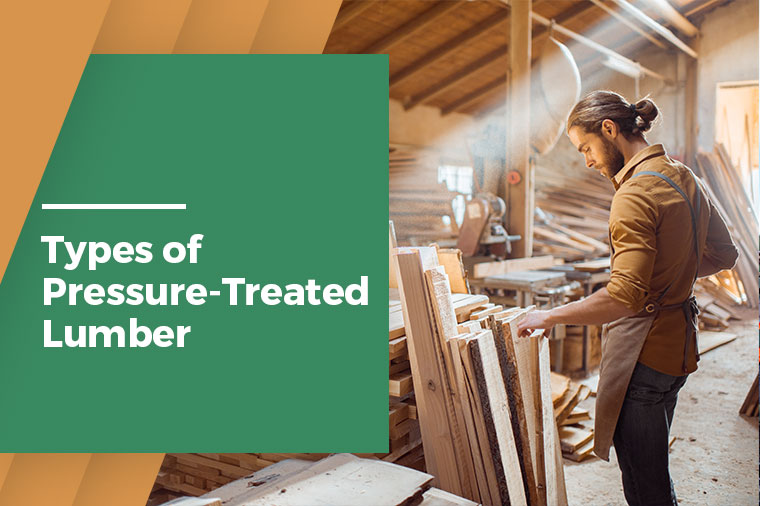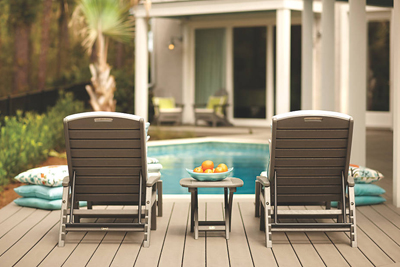Types of Pressure-Treated Lumber

To All Our Valued Customers, Over the past few years, the Covid 19 Pandemic has forced us to adapt and change the way we do things on a day-to-day basis. Florida Lumber is no exception. To make sure that we remain strong and competitive in the market for the years to come, Florida Lumber has had to adjust and change our vision for the future. In the last 2 years, we have stopped selling Sheetrock and drywall products, roofing felt and roofing materials, and have even closed on Saturdays.
Over the last few months, we have been transitioning our way out of the door supply business so on August 31, 2022, our door shop will stop assembling doors. We will continue liquidating our doors from inventory until we are out of material.
Some customers have asked if we are closing or even moving locations. To set the story straight, we are not closing or selling the business and we are not moving. These changes are all part of our new vision and path to continue serving South Florida and increasing our footprint in the construction supply industry.
Our focus is going to be on Lumber, Construction Materials, Rebar Fabrication and Rebar Accessories. As we have liquidated some of the items that we don’t sell anymore we have created more space to buy a larger volume of our core items and pass on the savings to our customers.
In the next year you will start seeing changes that will help improve our ability to serve you, our customers. We appreciate your business and your patience as Florida Lumber’s new vision becomes reality.
A Todos Nuestros Valiosos Clientes En los ultimos anos, la pandemia de el Virus (Covid 19) nos ha forzado a adaptarnos y cambiar la forma de hacer cosas en el dia a dia. Florida Lumber no ha sido una excepcion.
Para asegurarnos de mantenernos fuertes y competitivos en el mercado en los anos venideros, Florida Lumber ha tenido que ajustar y cambiar nuestra vision para el futuro. En los dos ultimos anos hemos dejado de vender los productos de yeso (sheetrock), paneles de yeso (drywall), tela asfaltica (roofing felt), materiales de techo y cerramos los Sabados. En los ultimos meses, hemos estado en transicion para salir del negocio de suministro de puertas, en Agosto 31, del 2022 nuestra tienda de puertas dejara de construir y/o cortar puertas. Vamos a continuar liquidando nuestro inventario de puertas haste que terminemos todo el material. Algunos de nuestros clientes han preguntado si estamos cerrando o si nos estamos moviendo a otra localidad. La verdad es que no estamos cerrando, no estamos vendiendo y no estamos cambiando de localidad. Estos cambios son todos parte de nuestra nueva vision y camino a continuar sirviendo al estado sur de la Florida y incrementar nuestras huellas en la industria de suministros de construccion.
paneles de yeso (drywall), tela asfaltica (roofing felt), materiales de techo y cerramos los Sabados.
En los ultimos meses, hemos estado en transicion para salir del negocio de suministro de puertas, en Agosto 31, del 2022 nuestra tienda de puertas dejara de construir y/o cortar puertas.
Vamos a continuar liquidando nuestro inventario de puertas haste que terminemos todo el material. Algunos de nuestros clientes han preguntado si estamos cerrando o si nos estamos moviendo a otra localidad.
La verdad es que no estamos cerrando, no estamos vendiendo y no estamos cambiando de localidad. Estos cambios son todos parte de nuestra nueva vision y camino a continuar sirviendo al estado sur de la Florida y incrementar nuestras huellas en la industria de suministros de construcción.
2431 N.W. 20TH ST.
MIAMI, FL 33142
PHONE: (305) 635-6412
Sales Fax: (305) 633-4054
Accounting Fax: (305) 635-3723
Email: sales@tloridalumber.com

Treated wood is available in a wide range of sizes and shapes. Pressure-treated wood for outdoor usage is the most common variety that a homeowner will see. Pressure-treated lumber, used for projects like wooden decks and fences, helps keep your outdoor structures looking beautiful for years by avoiding termites, rot, and fungal decay. Few people are aware of pressure-treated wood's advantages and why it should be utilized.
View Our Pressure-Treated Lumber Inventory
Even though the substance is the same, pressure-treated lumber varies from typical wood products in various ways. Treated lumber is a product in and of itself, from its manufacture through its intended and proper application.
Continue reading to learn more about this popular but distinct building material and how to use it in your projects.
What is Pressure-treated lumber?
Pressure-treated lumber (PT) is wood that has been impregnated with chemicals and preservatives to protect it from decay and insects. The wood protection is maintained using an air-replacement preservative in a depressurized storage tank.
This approach is the most successful in avoiding rot and insects, but the lumber treatment does not protect against weathering or rust.
How is Pressure-treated lumber produced?
First, the untreated timber is subsequently put in a massive horizontal treatment cylinder. The door is shut, and a vacuum is used to remove most of the air in the cylinder and the wood cells. When a preservative solution is poured into the cylinder and forced into the empty wood cells, pressure is created, resulting in pressure-treated wood.
Types of Pressure Treated Lumber
Pressure-treated Lumber comes in four different varieties. A tag will be attached to one end of each piece of pressure-treated timber to identify its allowed usage.
The four types of Pressure-treated lumber are as follows:
-
Above Ground
Above-ground pressure-treated wood can be utilized in readily maintained or replaced applications. It's only allowed to be used on surfaces that are at least 6 inches above the ground. It can only be used once it has been completely aired and drained.
Above-ground pressure-treated wood is for project elements that satisfy all of the following requirements:
-
isn't on or near the ground
-
dries quickly between wet periods, and
-
isn't in a tropical environment
-
Ground Contact
Pressure-treated wood that has been in direct contact with the soil can be utilized above ground or in direct contact with the ground.
When compared to above-ground pressure-treated wood, it delivers double the chemical retention and protection.
It must be utilized if the lumber is less than 6 inches from the ground or has restricted ventilation.
It must be utilized in situations where wood replacement or preservation is difficult.
-
In-Ground contact
Pressure-treated wood used for in-ground or critical applications has a greater retention level than timber used above-ground or in contact with the earth. Where there is a higher risk of deterioration or excessive environmental exposure, use in-ground type wood for critical structural components such as foundation posts, exposure to fresh or groundwater, or utility poles.
-
Marine Grade
Because of the high heat and pressure lamination and waterproof glue, marine-grade plywood is more resistant to moisture. Any gaps between the layers are filled with glue to keep the layers from twisting and deteriorating. This item is also made of hardwood, making it considerably more durable.
A waterproof sealant can extend the life of a plywood pier, boat, or another submerged item.
Additional Read:
WHAT IS THE DIFFERENCE BETWEEN TIMBER AND LUMBER
Grades of Pressure Treated Lumber
Pressure-treated lumber comes in five grades: Premium, Select, Number 1, 2, and 3, and Number 1, 2, and 3. The fewer knots, fissures, and other faults there are, the lower the grade.
-
Premium
Exterior Wood designed a "Premium" type of pressure-treated lumber for customers that want more. It's better for a retail lumber yard with many walk-in customers searching for a more attractive product.
-
Select Structure
The most durable and long-lasting material is Select Structural (SS). The grain slope on a 28 is 1 in 12 with seasoning checks and 2-1/4" tight, well-spaced knots. A knothole every 4' is allowed in select grade wood, and splits cannot be longer than the board's width.
-
Grade 1 structural
Lumber has a structural rating of 1 or 1, and the BTR is 1 in 10. It is more durable than 2 or 3-grade wood. Knots in a 28 must be spaced and tight, with no more than 2-3/4" between them, to avoid falling out. Each plank is permitted one hole every three feet, and any splits must be no wider than the plank's width.
-
Grade 2 structural
Number 2 grade timber contains more knots and imperfections than #1 grade, even if one face is clean enough to be classified as select or premium. The wood grain may have a peeling edge or wane, with 1 in 8 slopes.
Splits up to 1.5 times the board's width are allowed, as are 3-1/2" knots and one hole every 2'. Framing, lintels, rafters, trusses, joists, beams, and fences are used frequently for second-grade wood.
-
Grade 3 structural
More checks, cracks, wane, well-spaced larger knots and holes, and a grain slope of 1 in 4 are found in grade 3 or construction grade timber. The pressure-treated wood is often used for bracing, packaging, shipping, and light building or framing where it will not be visible. An SPF 3 28 can be utilized to span structural lengths of 12'-4".
-
Construction grade
1-grade lumber is generally referred to as construction grade. From load-bearing to trim, it's employed in all aspects of home building. Although both have almost the same structure and functionalities, still many of the applications wander around the construction grade. It is more stable than the other grade lumbers.
-
Standard grade
The wood of the second structural grade contains more faults and knots than the first. Joists, trusses, and other load-bearing structures are typical applications. The wood is 43 percent translucent in terms of visual 'quality.'
-
Utility grade
One of three categories of pressure-treated wood, the utility grade, has fewer limitations on knots and flaws than the other grades. Because it is not as strong as the other classes, it is frequently used for light frame applications such as bracing, crates, and pallets. It must be defect-free in 29 percent of its appearance.
-
Appearance grade
Some mills and merchants employ premium and select categories, as well as the amount of clear wood. The aesthetic value has no bearing on the structural quality; it makes things seem better. It's only meaningful if the pressure-treated wood's appearance is visible, such as on deck boards, railings, or other exposed structural sections.
Conclusion:
A chemical solution has been applied to preserve pressure-treated wood from insects, mold, mildew, and rotting. Diverse types of lumber treatment and wood grades are available for various uses. Pressure-treated wood is a product in itself from its production. Few people are aware of the benefits of pressure-treated wood and why it should be used. The material is the same but differs from traditional wood products in several ways. Hopefully, this article helped you make a better choice.
Visit Florida Lumber for more information.

